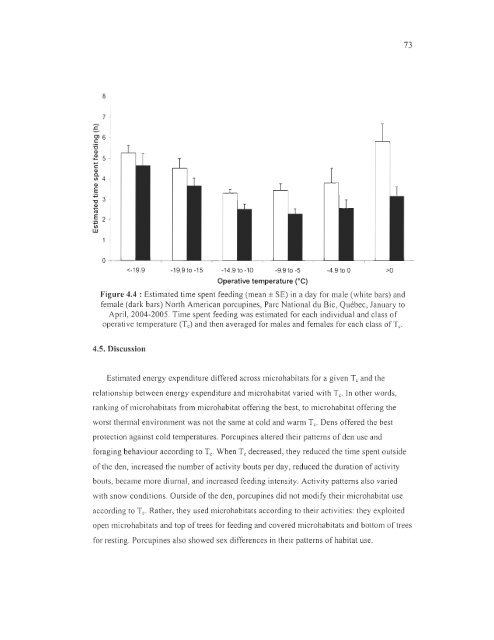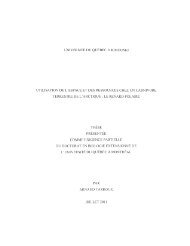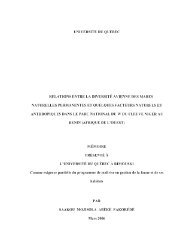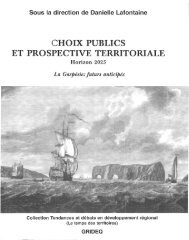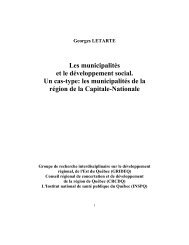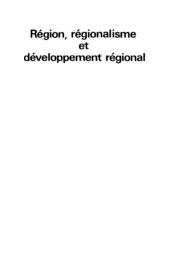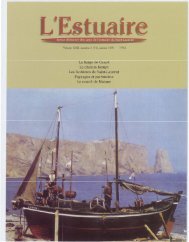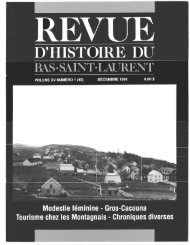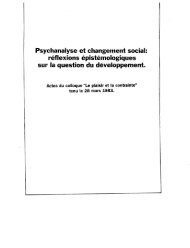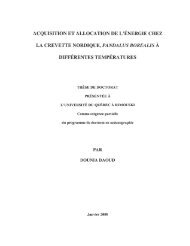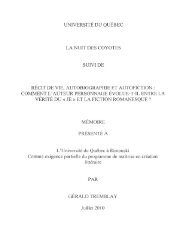influence du climat et de la prédation sur l'utilisation de l'habitat et la ...
influence du climat et de la prédation sur l'utilisation de l'habitat et la ...
influence du climat et de la prédation sur l'utilisation de l'habitat et la ...
You also want an ePaper? Increase the reach of your titles
YUMPU automatically turns print PDFs into web optimized ePapers that Google loves.
73<br />
8<br />
o _<br />
--L-_<br />
0<br />
Operative temperature (OC)<br />
Figure 4.4 : Estimated time spent feed ing (mean ± SE) in a day for male (white bars) and<br />
female (dark bars) NOlih American porcupines, Parc National <strong>du</strong> Bic, Québec, January to<br />
Apri l, 2004-2005. Time spent feeding was estimated for each indivi<strong>du</strong>al and c<strong>la</strong>ss of<br />
operative temperature (Tc) and then averaged for males and females for each c\ass of Tc.<br />
4.5. Discussion<br />
Estimated energy expenditure differed across microhabitats for a given Tc and the<br />
re <strong>la</strong>tionship b<strong>et</strong>ween energy expenditure and microhabitat varied with Tc. ln other words,<br />
ranking of microhabitats from microhabitat offering the best, to microhabitat offering the<br />
worst thermal environment was not the same at co Id and warm Tc. Dens offered the best<br />
protection against cold temperatures. Porcupines altered their patterns of <strong>de</strong>n use and<br />
foraging behaviour according to Te. When Tc <strong>de</strong>creased, they re<strong>du</strong>ced the time spent outsi<strong>de</strong><br />
of the <strong>de</strong>n, increased the number of activity bouts per day, re<strong>du</strong>ced the <strong>du</strong>ration of activity<br />
bouts, became more diurnal, and increased feeding intensity. Activity patterns also varied<br />
with snow conditions. Olltsi<strong>de</strong> of the <strong>de</strong>n, porcupines did not modify their microhabitat lise<br />
according to Te. Rather, they llsed microhabitats according to their activities: they exploited<br />
open microhabitats and top of trees for feeding and covered microhabitats and bottom of trees<br />
for resting. Porcupines also showed sex differences in their patterns of habitat use.


